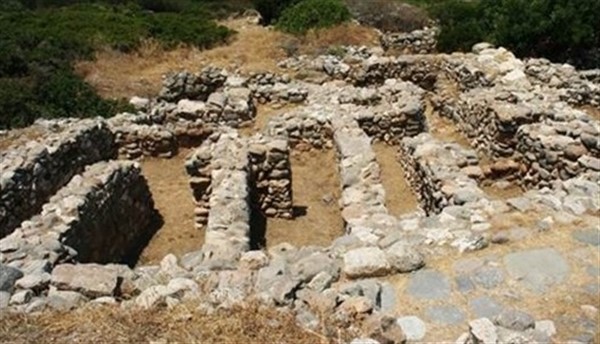Crete, the largest of the Greek islands, boasts a rich tapestry of history and culture that spans millennia. From the advanced Minoan civilization to the periods of Roman, Byzantine, Venetian, and Ottoman rule, the island is a living museum of human achievement and resilience. Preserving this vast heritage is crucial, and the efforts to protect and maintain Crete’s historical sites are as diverse and dynamic as the island itself. These preservation efforts ensure that the cultural legacy of Crete remains vibrant and accessible for future generations.
The Importance of Historical Preservation in Crete
Crete’s historical sites are invaluable not only for their cultural and educational significance but also for their contribution to the island’s identity and economy.
Cultural and Educational Significance
- Cultural Identity: Historical sites connect the present population with their ancestors, fostering a sense of identity and continuity. They are tangible links to the past, reflecting the island’s complex history and cultural evolution.
- Educational Resource: These sites serve as educational resources, providing insights into ancient civilizations, architectural techniques, and historical events. Schools, universities, and tourists benefit from the knowledge preserved in these ancient structures.
Economic Impact
- Tourism: Crete’s historical sites attract millions of visitors each year, contributing significantly to the local economy. Tourism related to historical and cultural heritage is a vital economic driver, supporting businesses and creating jobs.
- Sustainable Development: Investing in historical preservation promotes sustainable development by balancing the needs of tourism with the conservation of cultural assets.
Key Historical Sites and Preservation Efforts
Crete is home to numerous historical sites, each with unique preservation challenges and initiatives.
The Palace of Knossos
The Palace of Knossos, the most famous Minoan site, is a symbol of ancient Crete’s architectural and cultural achievements. Discovered and partially restored by Sir Arthur Evans in the early 20th century, Knossos is a focal point of preservation efforts.
- Restoration and Conservation: Ongoing conservation work aims to protect the site from environmental degradation and visitor impact. This includes stabilizing structures, restoring frescoes, and managing visitor flow.
- Research and Education: Archaeological research continues at Knossos, providing new insights into Minoan civilization. Educational programs and guided tours enhance public understanding and appreciation of the site.
The Archaeological Site of Phaistos
Phaistos, another significant Minoan palace complex, is renowned for its architectural sophistication and the famous Phaistos Disc.
- Conservation Projects: Efforts at Phaistos focus on preserving the structural integrity of the ruins and protecting the site from natural erosion. These projects often involve international collaboration.
- Visitor Facilities: Improvements in visitor facilities, including interpretive signage and guided tours, aim to enhance the visitor experience while protecting the site.
Venetian and Ottoman Monuments
Crete’s Venetian and Ottoman heritage is evident in its fortified cities, castles, and mosques, which require specialized preservation techniques.
- Venetian Walls of Heraklion: The extensive Venetian fortifications in Heraklion are subject to ongoing conservation efforts. These include structural repairs, restoration of damaged sections, and measures to prevent further decay.
- Rethymno Old Town: In Rethymno, the preservation of Venetian and Ottoman architecture in the Old Town is a priority. Restoration projects focus on maintaining the historical character of buildings while adapting them for modern use.
Challenges in Historical Preservation
Preserving Crete’s historical sites involves overcoming numerous challenges, including environmental threats, funding constraints, and balancing tourism with conservation.
Environmental Threats
- Climate Change: Rising temperatures, increased rainfall, and extreme weather events threaten the structural integrity of ancient sites. Efforts to mitigate these effects include improved drainage systems, protective shelters, and climate monitoring.
- Erosion and Decay: Natural erosion and decay pose significant risks. Continuous maintenance and conservation techniques, such as consolidating stone and repairing mortar, are essential to combat these threats.
Funding and Resource Constraints
- Limited Budgets: Funding for preservation projects is often limited, relying on government support, private donations, and international grants. Prioritizing projects and efficient allocation of resources are crucial for effective preservation.
- Skilled Workforce: Maintaining a skilled workforce trained in traditional building techniques and modern conservation methods is essential. Training programs and workshops help develop the necessary expertise.
Balancing Tourism and Conservation
- Visitor Impact: Managing the impact of millions of visitors requires careful planning. Measures include controlled access, designated pathways, and visitor education programs to minimize damage to sites.
- Community Involvement: Engaging local communities in preservation efforts ensures that conservation strategies align with local needs and values. Community involvement fosters a sense of ownership and responsibility for heritage sites.
Innovative Approaches to Preservation
Innovative approaches and technologies are increasingly used to enhance preservation efforts and engage the public.
Digital Preservation
- 3D Modeling and Virtual Tours: Digital technologies, such as 3D modeling and virtual tours, allow for detailed documentation of sites and provide alternative ways for the public to experience historical monuments.
- Archival Documentation: Digital archives and databases ensure that valuable information about historical sites is preserved and accessible for future research.
Sustainable Tourism
- Eco-Friendly Practices: Promoting eco-friendly practices in tourism, such as using sustainable materials and reducing waste, helps protect historical sites and the environment.
- Educational Initiatives: Educating tourists about the importance of preservation and responsible behavior at historical sites encourages respectful and sustainable tourism practices.
Conclusion
The historical preservation efforts in Crete are vital for safeguarding the island’s rich cultural heritage. From ancient Minoan palaces to Venetian fortifications and Ottoman monuments, these sites tell the story of Crete’s diverse and dynamic history. Overcoming challenges such as environmental threats, funding constraints, and balancing tourism with conservation requires innovative approaches and community involvement. By investing in preservation and promoting sustainable tourism, Crete ensures that its historical treasures remain vibrant and accessible for future generations, fostering a deep appreciation for the island’s unique cultural legacy.


